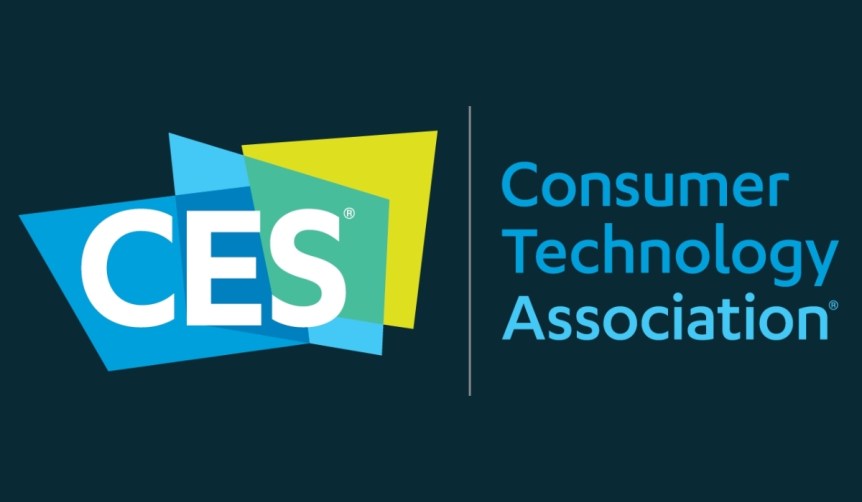If you’re into technology like we are, you probably keep an eye on news from the Consumer Electronics Show each year. But with so much on display, it can be difficult to find CES coverage that speaks to the unique interests of 3D artists. We’ve got your back!
Our team scoured the show floor and wanted to tell you about some of the latest technology we found most impressive, from digital twins for medical applications to laptop displays especially suited to a 3D artist.
1. 3D Scanning Tech Continues to Improve
A handful of 3D and volumetric scanning companies showed off their latest hardware and software, attesting that photogrammetry and volumetric video are still worth keeping an eye on. Volumetric video as a medium still feels like it’s years away from any real mainstream application, but things are moving quickly.
We’ve already seen advances in photogrammetry in recent years such as Unreal Engine’s RealityScan app and the incorporation of AI to create a 3D model from a few seconds of video. Fields like education, medicine, and manufacturing will continue to find better uses for 3D scanning technology from studying the human body to touring virtual environments. Kiri Engine had the most promising solution at CES with its high-quality scans and the ability to export to most 3D interchange formats.
One of the most impressive products sports fans might enjoy was Sony’s Virtual Fan Engagement partnership with Manchester City. The portable volumetric system is capable of capturing and distributing animated 3D reconstructions of people, objects, and spaces with very low latency from any location. It meant Man City fans could explore a virtual Etihad Stadium and watch match highlights in a full 360-degree perspective on tablets and Sony’s Spatial Reality displays.
2. Digital Health Goes AR
Dassault showed some remarkable tech with its virtual twins AR medical demo. This initiative is being used by people in the medical field to visualize, test, understand, and predict things before a patient is treated like the way drugs affect a disease or surgical outcomes using highly accurate 3D models. The demo allowed visitors to interact with a 3D-printed replica of a live heart and brain, then instantly see their actions mirrored in the virtual twin on a connected touchscreen.
Staying in the AR-assisted medical world, Magic Leap got its IEC 60601 medical certification, a series of technical standards for the safety and effectiveness of electrical equipment. In collaboration with Brainlab, the company demonstrated how its headset is being used by surgeons to receive real-time patient stats without having to take their eyes off the patient during surgery. They can even see 3D overlays of patient organs for improved visual clarity!
3. Display Technology Could Soon Let us See in Stereo Without Glasses
Insanely bright, high-resolution displays were hard to miss at CES this year, with everything from completely wireless TVs running off of hot-swappable batteries to massive 8K resolution screens that can run at super-high refresh rates.
If you’re a 3D artist creating content for large displays, 8K technology has an important impact on your workflows. Not just for the final render, but also for the resolution of the geometry and textures of the 3D assets you use. It makes your work exponentially tougher and limits your ability to rely on some traditional 3D libraries. So I know how significant it can be.
But it was the 3D laptop displays from ASUS and Acer that impressed us most. With them, anyone can see in stereoscopic 3D without the need for a headset or glasses. Even with how simple the demos were, we couldn’t help imagining how much fun it would be to fire up our favorite software and begin modeling. We believe this could be a major workflow improvement for 3D artists.
Additionally, Light Field Lab is working on some amazing 3D display technology. I’m positive this will be the future of display technology and something that I imagine will play a big part in blurring the lines between the real and virtual worlds of the metaverse.
4. Generative AI Technology is Still in its Infancy
Almost every category at CES had some products that utilized artificial intelligence, however generative AI was still fairly fringe, with only a few vendors we saw showing off generative tech. Our very own Dade Orgeron brought it up during a panel discussion and was surprised to see many people in the audience unaware of the term.
Related to AI, BMW walked (or drove) people through Here Technology’s automated mapping technology, named UniMap. Powered by a series of AI models which allows users to generate their own digital maps and location tools, BMW has been using UniMap to power level-2 automated driving via its hands-free function Highway Assistant. While it’s not exactly related to 3D, it doesn’t take much effort to imagine how these AI models could develop into a solution to power automated virtual environments and scenarios.
5. Metaverse Technology is Cautiously Alive and Kicking
Much like AI tech usage, almost every company introduced some type of metaverse experience at CES this year. Canon wore the metaverse tag proudly with an immersive movie experience from M. Night Shyamalan. The film was made using Canon’s Kokomo VR software, a platform that allows people to communicate and interact in virtual, metaverse-like spaces.
Many exhibitors were also making metaverse hardware more user-friendly, including offering lightweight AR glasses with lens technology that made them far more wearable for the average consumer. Overall, it was clear that many people could see the value of the metaverse, but understood that to achieve the undertaking we need massive web infrastructure (Web3) improvements to support the blurring of digital and physical worlds.
Want to learn more about the future of the 3D industry? Keep up to date on the TurboSquid blog.

